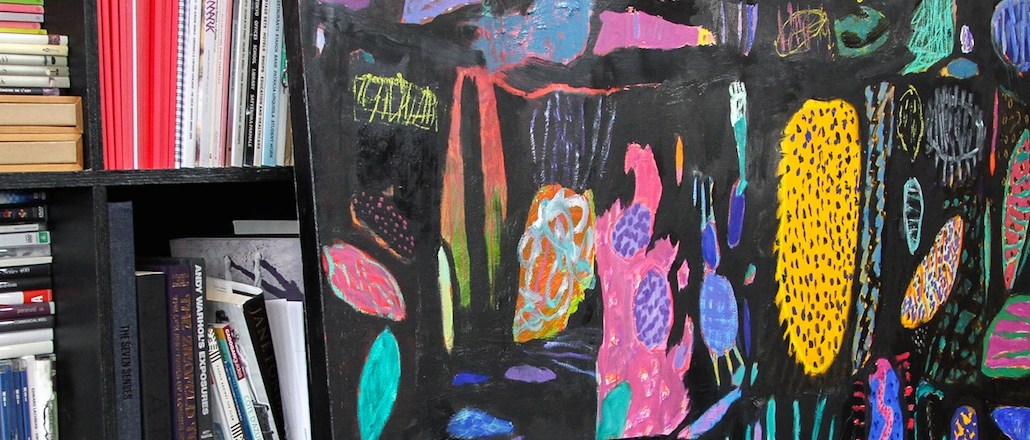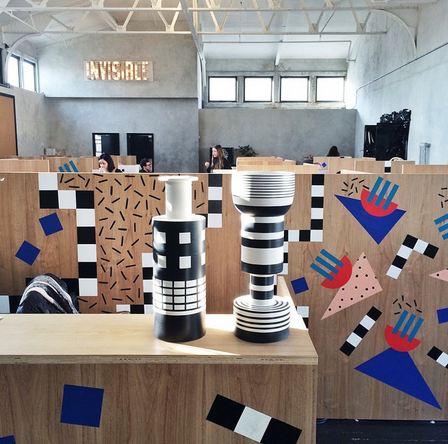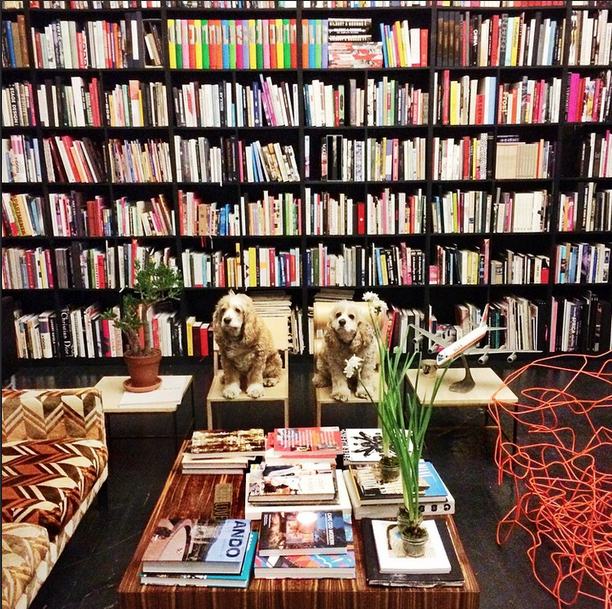Inside the agency: The ‘colorful, curious playground’ of Chandelier Creative

Chandelier Creative’s penthouse office in New York City’s Soho neighborhood has been the workshop of late fashion designer Giorgio Sant’Angelo, a speakeasy and an art and dance studio. Today, drawing from this mixed heritage, it’s what founder and creative director Richard Christiansen calls “a colorful, curious playground.”

The agency’s interiors are an eclectic mix of art, design, architecture and illustration. There’s a bright orange wrought-iron couch from the Brazilian designers the Campana Brothers. At the entrance, the front desk is a nod to Ettore Sottsas’ “Memphis Group,” a brightly colored design group that was born in Milan, not Tennessee, in the 1980s. There is some original pottery from Sottsas as well.


“The idea was that everyone creates work inspired by their influences,” said Christiansen. “It is elevated and sophisticated, yet enjoyable, which represents the nonlinear approach we have to the work that we do.”
The space is an open office layout, and big windows on one side lend a bright and airy feel. The desks that line it were designed by French designer Camille Walala. The staff of 30 changes seat assignments every month to foster collaboration and creativity.
A range of interesting sculptures and artwork have been sporadically placed around the office and serve as a constant reminder for employees to think creatively.

There’s an inspiration wall where people can share ideas and an antique wooden armoire-turned-giant-fish aquarium adorning the room. Music often plays in the background, anything from Frank Sinatra to an EDM playlist, depending on the staffer in charge that day.


Those looking for a quieter space can make use of the agency’s library, which holds books on a wide range of topics — from architecture to gardening.

Black double doors lead into the space, which is also used for client meetings. Designed by the company MachineHistories in Los Angeles, the doors have carved into them some of Christiansen’s favorite things, including teapots, robots, Greek gods, the Garden of Eden and even Gonzo, the Muppet.

The phrase “Make and Make-Believe” embodies the agency’s philosophy, which proposes that work spaces are also play spaces and that colleagues are also collaborators who explore, immerse, create and inspire together. Which is why the agency’s digs are frequent venues of artist workshops and pop-up stores. It also hosts several events for its employees to enjoy every two weeks, from floral-arrangement workshops to pottery classes.

“It’s a way to keep people inspired outside of the office as well as for team-building,” said Lauren Prince, the agency’s president and CEO. “The idea is to bring in creativity in all its forms.”
This desire to constantly spark creativity goes beyond the physical office space. Christiansen has set up what he calls his own “Camp David-inspired summer camp” called the Mermaid Ranch in East Hampton, which staff and clients — which include Virgin, Old Navy and Harry’s — are encouraged to use. The agency even took all 42 of its employees on a “design inspiration” trip to Tokyo last year.
Chandelier’s “maker culture” has also seeped into its hiring practices. Applicants are encouraged to make something as a part of their application. One submitted a handmade dreamcatcher; another, a custom-designed Barbie doll that the applicant modeled after herself. Christiansen has a non-agency background (he worked at several publications including Benetton’s Colors Magazine, Assouline, Radar magazine and Suede magazine) and hires people from different professional backgrounds — including an “alchemist” from Texas, who makes shampoos and candles and the like.

“I am trying to create a culture that celebrates the humanities — so even if you’re a graphic designer, you know architecture and even if you’re an accounts person, you know about performance art,” said Christiansen. “As corny as that sounds, I want people to be better and smarter people when they leave from here.”
More in Marketing

Zero-click search is changing how small brands show up online — and spend
To appease the AI powers that be, brands are prioritizing things like blogs, brand content and landing pages.

More creators, less money: Creator economy expansion leaves mid-tier creators behind
As brands get pickier and budgets tighten, mid-tier creators are finding fewer deals in the booming influencer economy.

‘Still not a top tier ad platform’: Advertisers on Linda Yaccarino’s departure as CEO of X
Linda Yaccarino — the CEO who was never really in charge.





